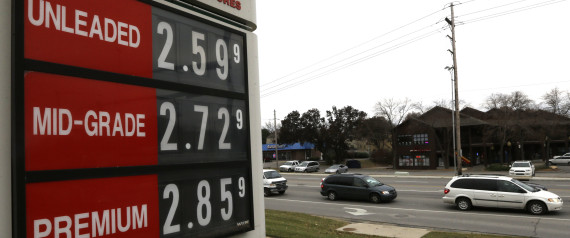The production of the world’s oil has become more diversified and competitive than ever before. And that’s a good thing.
Millions of American’s will go to the pumps this week and find a little relief. Some may even be celebrating. The average American motorist, who spent over $3,000 on gas last year, is on track to find an extra $800 dollars in their pocket if the current trend continues. What on earth is driving this? Economists indicate Americans need look no further than their own backyards.
America has quietly become the world’s largest oil producer. While it does not export petroleum fuel like the ranks of Saudi Arabia and Russia, the U.S. has been able to send ripples through international markets simply by the amount of oil it no longer imports. The traditional players of the industry have been left struggling to come to terms with the increasingly dynamic market value of a barrel of oil.
What does determine the price a producer can fetch for a barrel of crude? It starts with demand. When the winter months approach and the majority of the world requires more energy to stay warm and maintain the everyday lifeblood of an economy, demand goes up. Prices are set by analysts who compare how high the demand is versus how much oil suppliers are producing. When prices stay high, producers can invest more in production which eventually brings supply back up until the cycle repeats itself. Exporters have traditionally been in control of how much oil finds its way into the market, and thus how much they can charge for a barrel. This has not been the case as of late. In a meeting on November 27th, OPEC, the Organization of Petroleum Exporting Countries, who controls about 40% of world oil production, was unable to come to an agreement over how much oil they will produce. Keeping with the trend of high supply fetching lower prices, the global price has continued to freefall.
This trend has winners and losers. The biggest winners are the big importing countries like Japan and India that have seen an upturn in the spending power of their markets. More money in the pockets of consumers tends to have a therapeutic effect on besieged central banks and struggling domestic economies. The losers, on the other hand, are not so relaxed. Countries that have invested big in their oil production, particularly Russia and Nigeria, are hurting badly. They have gambled on a steady rise of the cost of oil to pay back their startup costs, and current trends seem frightfully out of their control.
What may sting more for certain OPEC members is that their de facto leader, Saudi Arabia, is playing a dangerous waiting game at their expense. With over 900 billion in cash reserves, Saudi Arabian policymakers know they have been afforded the luxury of patience. The Saudi’s are keen to allow the current low prices to kill off the many new players whose high costs of production will be unsustainable with present profits. No doubt guided by their mistakes during the oil crisis of 1970, the Saudis trust that when the dust settles they’ll control even more of the industry.
This brings us back to the pesky Americans. Our great natural gas revolution has been pioneered by of the exact type of producers Saudi Arabia is hoping current oil bargains will kill off. American natural gas is extracted primarily from shale rock through a process that uses high pressures of water to break down to reserves. This process, at its presently nascent stage, is costly. Shal-oil producers, whom are also springing up in countries like the Czech Republic and China, are currently hemorrhaged deep in debt to research and construct new technologies. The hopes of the Saudis are very much going to become a reality in the coming months. Shale companies leveraging too much debt will be hit hard and likely undergo a wave of bankruptcies.
The shakeout of the budding industry will be severe, but in the long term shale production looks poised to thrive. From the Niobrara formation in Colorado to the Mississippian Lime between Oklahoma and Kansas, the present woes will yield an upturn in long-term investment. The relatively cheap price to construct a shale well, about $1.5 million, looks increasingly attractive when set against the current tradition of oil-field drilling. Exxonmobil and Rosneft (The Russian State subsidiary) recently spent a combined $700 billion constructing a well off the coast of Siberia whose oil will likely cost billions over the next ten years to develop.
The current state of the market looks to be a positive indicator of its long-term health. A diversification in where oil comes from means consumer demand will be met from more places than the wells of the Middle East. This translates to greater global stability and a price less susceptible to geopolitical crises. Oil has historically been an industry out of the consumer’s control. A little more pull from the old invisible hand can do a market a world of good.


